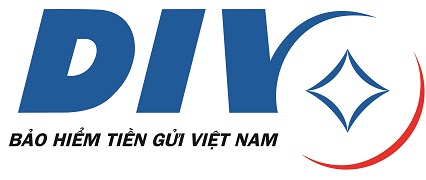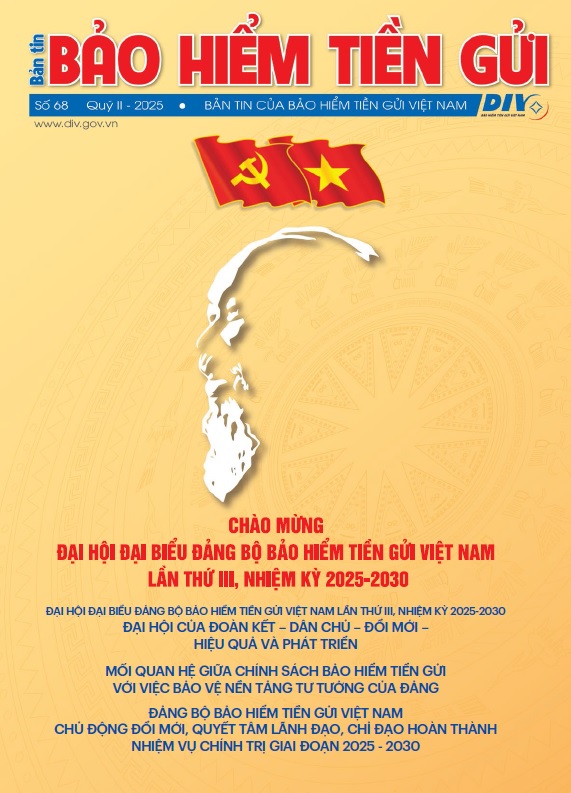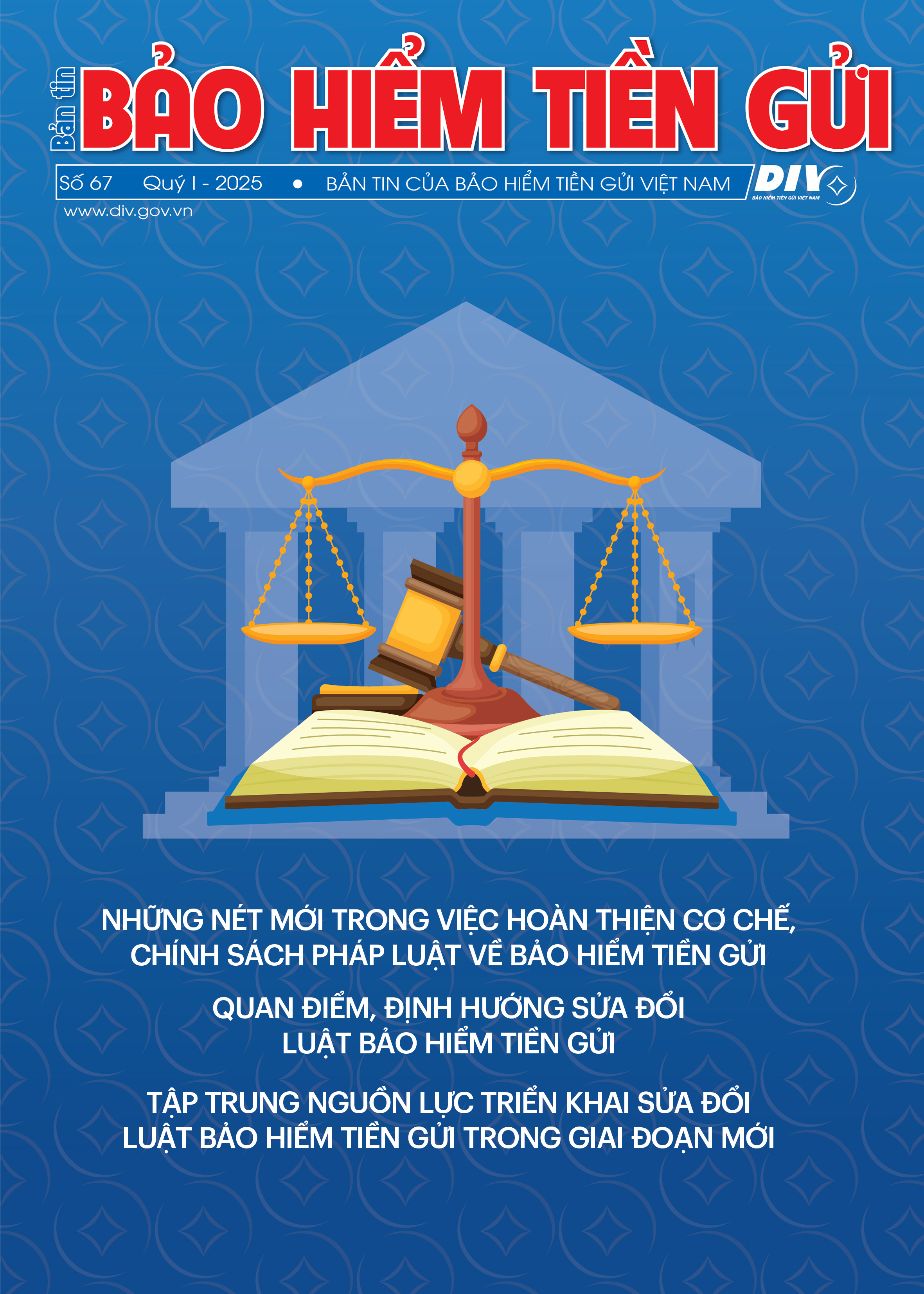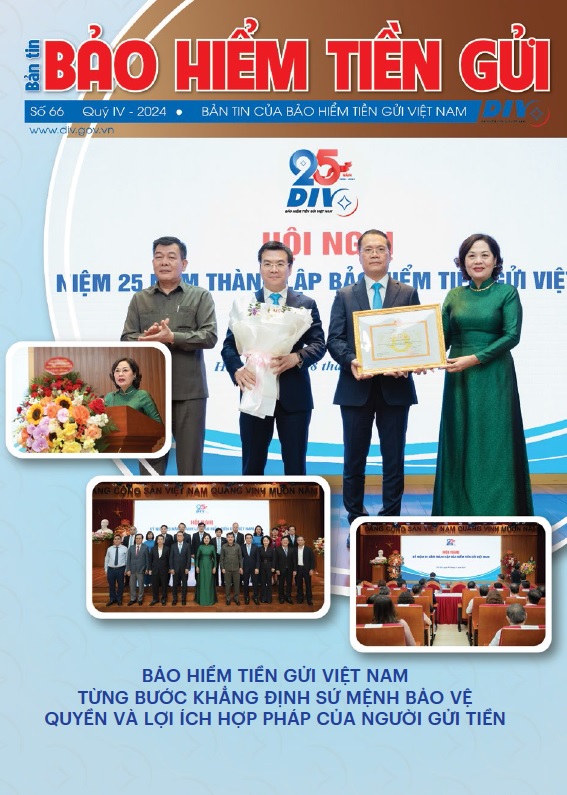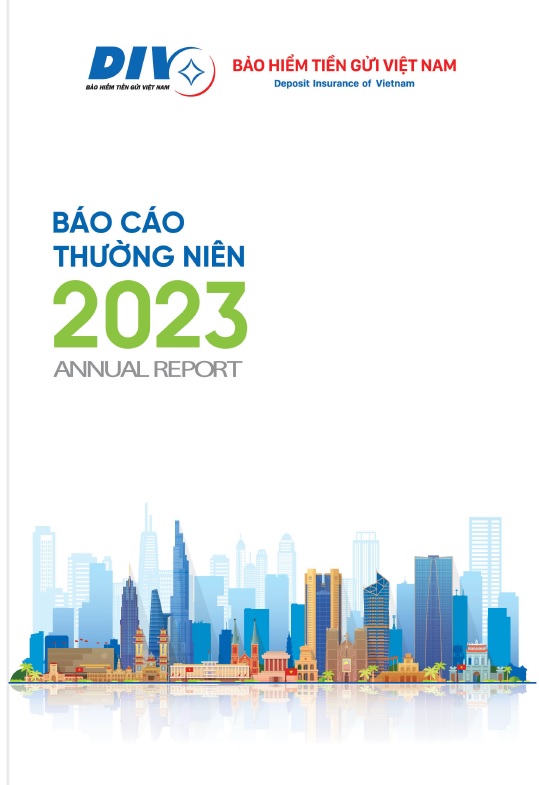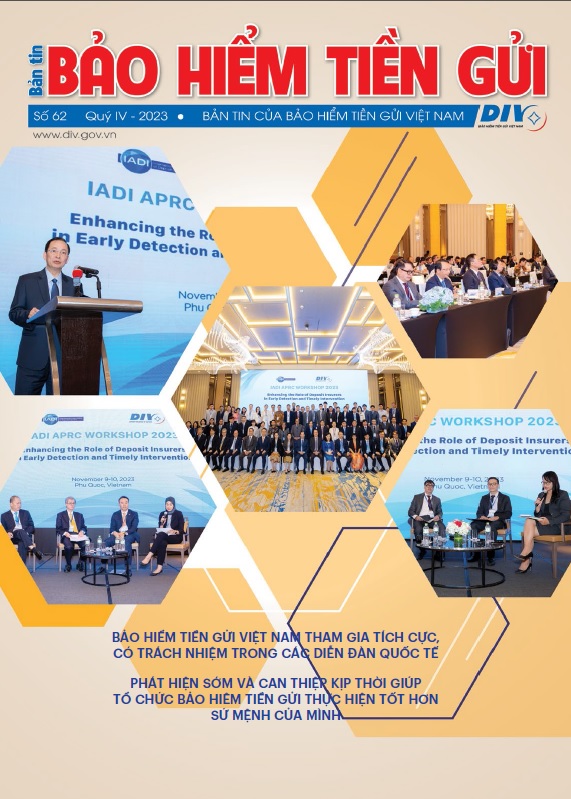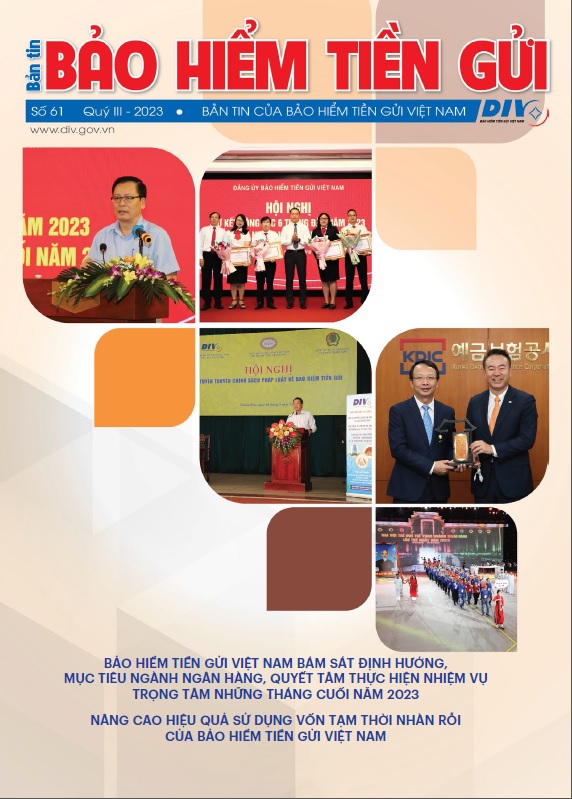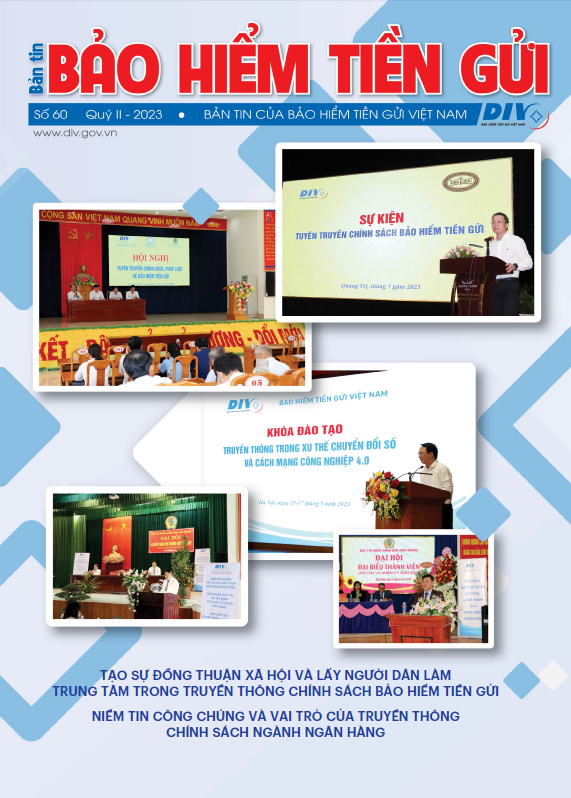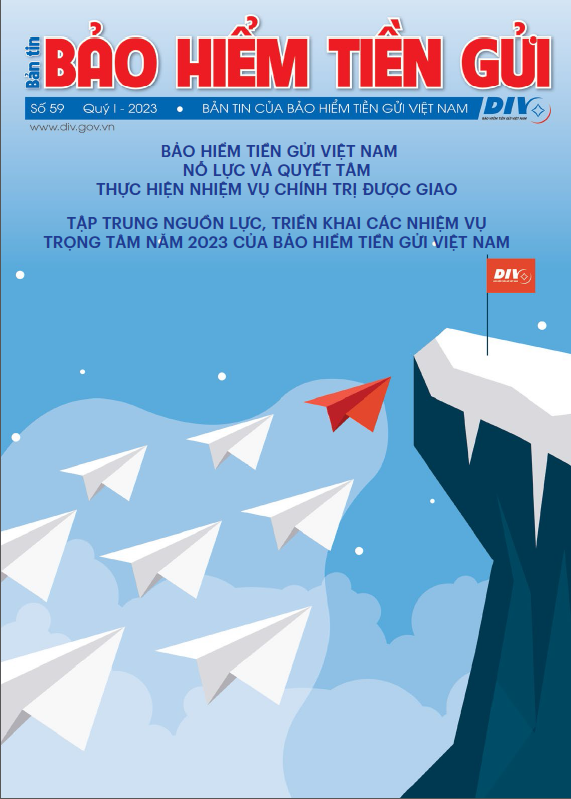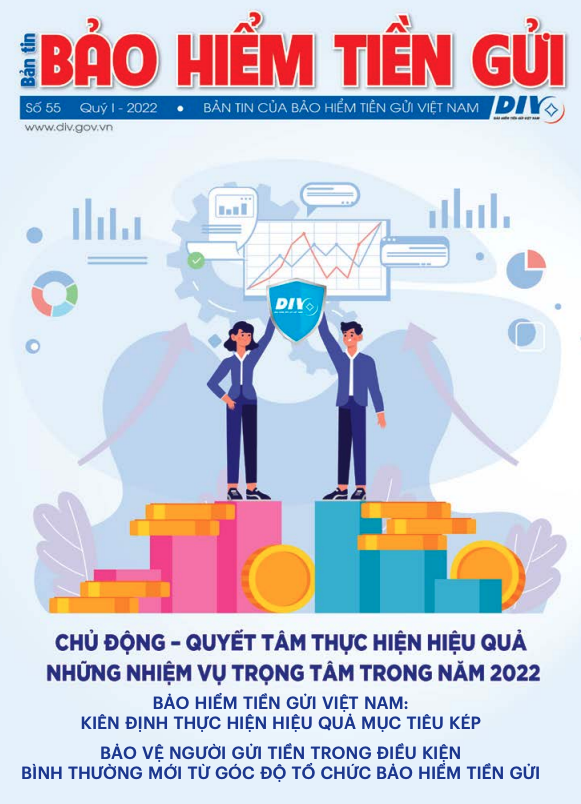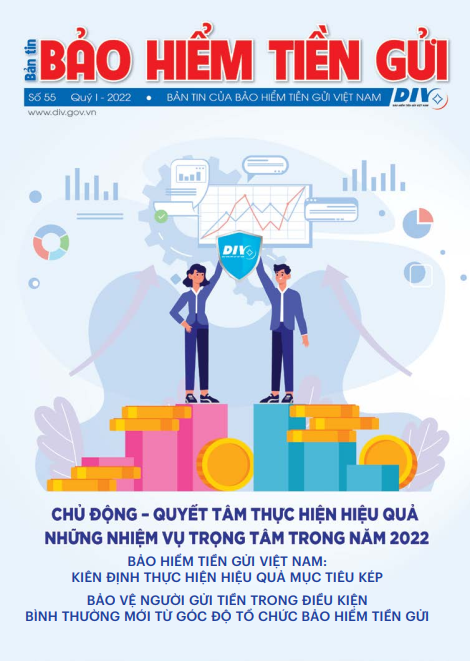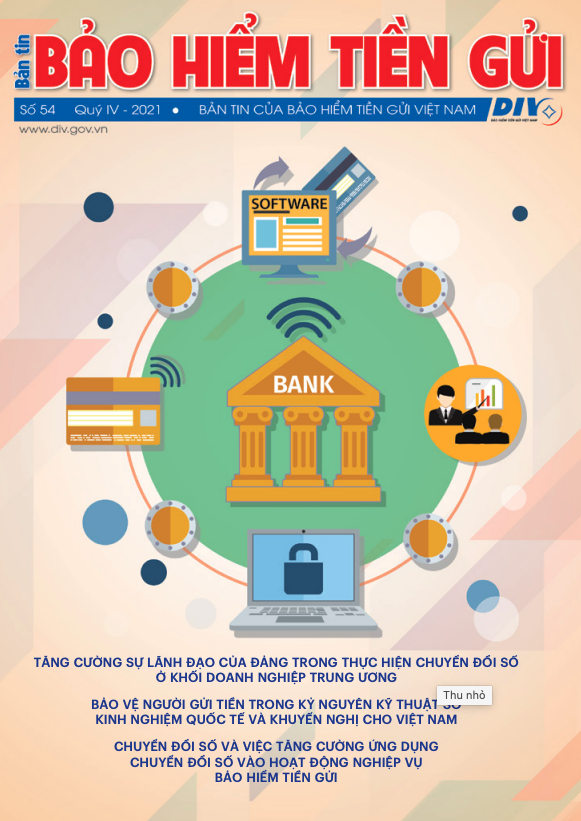With the characteristics of the market economy with a high level of competition, strong businesses will survive, weak businesses that are unable to maintain production will go bankrupt. For organizations doing business in the field of money and banking (referred to as financial institutions), as well as enterprises in the market economy, if they do not perform well, they cannot maintain their business. However, the bankruptcy of financial institutions has a great influence on the socio-economy, on depositors, and has a knock-on effect on the development of the economy.
In order to limit the bankruptcy and the negative impacts of financial institutions upon bankruptcy, in the market economy, a type of insurance for banking activities has been established called deposit insurance. This type of insurance was implemented very early in many countries. In the US, deposit insurance has been around since 1934. It has been proven that, in countries where deposit insurance was established and operated effectively, the number of banks declared bankrupt has decreased markedly. The nature of deposit insurance is to protect the legitimate rights and interests of depositors, thereby building depositors' trust domains. This is an important factor to help banking and financial institutions develop more and more effectively, on the basis of mobilizing more capital sources in the society for lending and other banking services, the economy thus develops. Besides, the deposit insurance has prevented chain breakdowns in the banking system, contributing to maintaining the stable and safe development of credit institutions.
In our country, the deposit insurance policy began to be implemented in 1994 according to Decision No.101/QD/BTC dated February 1, 1994 of the Minister of Finance on promulgating rules on liability insurance of credit funds for term deposits. However, deposit insurance under Decision No.101/QD-BTC is only one of the insurance business operations carried out by insurers on a voluntary basis. The scope of deposit insurance is still very limited because the insured institutions are only people's credit funds and deposits are insured only with term deposits in Vietnam dong. Therefore, it has not had much impact on depositors and the stable development of PCFs.
With reference to international experience and realization of the importance of deposit insurance for banking operations in the new period, on December 12, 1997, the National Assembly promulgated the Law on Credit Institutions, which stipulates: “The credit institution is responsible for participating in the deposit insurance or deposit guarantee organization; with coverage limit prescribed by the Government”. With this regulation, it has created an important legal basis for the birth of a new deposit insurance regime in our country.
On September 1, 1999, Decree No. 89/1999/ND-CP on deposit insurance issued by the Government clearly stipulated the purpose and nature of deposit insurance; objects of deposit insurance, types of insured deposits, insurance premiums...; Then, on November 9, 1999, the Prime Minister signed Decision No.218/1999/QD-TTg on the establishment of Deposit insurance of Vietnam (DIV) - an independent organization specializing in deposit insurance. On October 7, 2000, DIV officially came into operation.
After 12 years of operation within the legal framework of the Decree, it has also shown the importance of DIV in supporting the development of safe and effective credit institutions. Therefore, on June 18, 2012, the National Assembly promulgated the Law on Deposit Insurance; The Government issued Decree No. 68/2013/ND-CP dated June 28, 2013 detailing and guiding the implementation of the Law on Deposit Insurance. The Governor of the State Bank of Vietnam (SBV) issued Circular No. 24/2014/TT-NHNN dated September 6, 2014 guiding a number of contents on deposit insurance activities.
According to current regulations, “Deposit insurance is a guarantee to return the deposit to the insured of the deposit within the coverage limit when the insured institution falls into insolvency or go bankrupt”. In terms of operational nature, deposit insurance is a type of compulsory insurance. The application of compulsory insurance for deposits not only protects the interests of depositors and handles risks for the deposit receiving organization, but also contributes to protecting the safety of the whole system of credit institutions and stabilize the national currency. At the same time, it also creates equality and fairness in organizations with banking activities, contributing to improving the reputation of credit institutions. There are also many countries in the world that apply compulsory deposit insurance. US law requires banks that are members of the Federal Reserve system to participate in insurance at the Federal Deposit Insurance Corporation (FDIC).
DIV is a special financial institution in the national financial system that, together with agencies such as the State Bank of Vietnam and the National Financial Supervisory Commission, performs the task of consolidating control related to country risks, ensuring to protect the legitimate interests of depositors, contribute to stabilizing the banking and financial system. DIV plays an influential role in promoting the improvement of the quality of banking operations towards attracting maximum temporary idle capital in the social community on the basis of mutual benefits. For depositors, deposit insurance activities contribute to strengthening public confidence in the banking system and protecting the legitimate rights and interests of millions of depositors. For the system of credit institutions, deposit insurance creates favorable conditions for the healthy and safe development of the credit institution system and promotes deposit mobilization for development investment, thereby creating conditions to promote the country's economy for sustainable development.
For the operation of the PCF system, it is also the subject of deposit insurance. Up to now, the PCF system has 1182 funds, total deposits as of June 30, 2022 is 147,710. People's credit funds operate according to the cooperative economic model in the monetary and banking field. According to the provisions of the Law on Credit Institutions, a People's Credit Fund is a cooperative credit institution, organized according to the principles of cooperatives, in compliance with the provisions of the Law on Cooperatives and the Law on Credit Institutions, established and operates within administrative boundaries (a commune, ward, township or inter-commune, etc.). It is independent on the accounting regime, operates on the principle of voluntary, autonomous, self-responsibility for performance results, with the main goal of mutual assistance among members, effective implementation of production, business and service activities and improvement of life. Since its establishment until now, the credits of the People's Credit Fund are mainly provided to members, specifically from 95 to 99% of the credit balance is loans to members. Most of the PCF's members operate on a small scale, so the PCF's loans are mainly short-term loans. Fund mobilization is about 50-60% from members, the rest is mobilized from outside.
This is a unique feature of PCFs, which is different from commercial banks and other microfinance institutions. For the purpose of such establishment, the operation objective of the PCFs is not profit, but the guideline is to serve the interests of members. This is also one of the reasons that the State stipulates a lower corporate income tax rate for them than commercial banks.
PCFs are also limited to operating in a certain area. PCFs have uneven operating models, most of them are small and medium-sized enterprises. Among 1182 PCFs, as of December 31, 2021, 43.8% of them have assets of less than 100 billion dong, 40.3% of them have asset from 100 to less than 200 billion dong and 14.4% have asset from 200 to less than 500 billion dong, only 1.5% have assets size over 500 billions dong. As a cooperative credit institution, according to the law, the charter capital of a PCF is very small compared to commercial banks which are more popular. According to the provisions of Decree No.86/2019/ND-CP stipulating the legal capital of credit institutions and foreign bank branches (effective from January 15, 2020), the legal capital of PCFs is only from 0.5-1 billion dong (previously only 0.1 billion dong), while commercial banks are 3,000 billion dong.
In terms of operational quality, PCF's non-performing loans are currently below 1%, lower than that of commercial banks. However, in fact, although the non-performing loans of the whole system are low, there are also some PCFs operating unsafely, with a high non-performing loan ratio, which must be put under special control. Over the years, DIV reimbursed insurance deposits and participated in the liquidation council for 39 PCFs that were forced to dissolve with the amount of 26.780 billion VND. The number of people insured was 1,795 people. From 2013 onwards, due to the provisions of the Law on Deposit Insurance, PCFs with difficulties in payment could not use loans from the DIV. DIV only reimburses depositors at bankrupt or dissolved PCFs. Meanwhile, in fact, although Vietnam has a Law on Bankruptcy, the bankruptcy of a financial institution has no precedent, so some funds have not been able to recover but also cannot implement bankruptcy procedures. Therefore, the role of the deposit insurance is limited.
However, the protective effect of the deposit insurer is not only reflected in direct payments to depositors, but also early warning activities, such as assisting PCFs in monitoring deposits, regularly supervises and periodically examines 100% of the PCFs. In which, the supervision profession focuses on analyzing and evaluating the current status of operation of the PCFs; the compliance with regulations on deposit insurance as well as compliance with regulations on safety of banking operations; thereby warning the risks, mistakes and weaknesses that the PCF needs to overcome and report and propose to the SBV for timely handling. In addition, deposit insurance also participates in the process of restructuring, handling weak PCFs and special control. In the past time, DIV has sent staff to join the Special Control Board at PCFs to coordinate and comment on plans for commercial banks to participate in resolving PCFs as well as to support depositors' payments at such PCFs.
DIV, as the agency that directly implements deposit insurance policies, protects depositors and contributes to the safety and soundness of banking operations, can play an active role in the process of restructuring the PCFs. This is reflected in the operations that the DIV has been assigned in the Law on Deposit Insurance such as issuing and withdrawing the Certificate of participation in deposit insurance, collecting deposit insurance fees, examining and supervising the participating organizations, and paying insurance to the depositors when payment obligations arise… After the Law amending and supplementing a number of articles of the Law on Credit Institutions was passed by the National Assembly in 2017, the DIV continued to be assigned new functions and tasks such as participating in the assessment of the PCFs’ recovery plan, providing special loans to credit institutions, etc. With the newly assigned functions and tasks, the DIV has involved more strongly, participated more deeply in the restructuring process of PCFs. It is very appropriate that the deposit insurer participates in handling and restructuring small-scaled credit institutions such as PCFs, because the resources of the deposit insurers are limited. The deposit insurer cannot intervene and resolve many banks at the same time, but can meet the intervention, support and resolution of PCFs. In addition, ensuring PCFs operate safely, efficiently, and recover soon after encountering problems is also a solution that both protects the interests of depositors and avoids losses to the reserve fund of the deposit insurer, and at the same time does not cause local disturbances or have a knock-on effect on the system.
It can be said that the deposit insurer, with its functions and duties, plays an active role in strengthening depositors' confidence and trust in PCF's members in depositing money at the fund, and making positive contributions in consolidating and handling weak PCFs and specially controlled PCFs. However, in order for the role of deposit insurance to promote its true nature of paying deposits to depositors when the insured institution is unable to return the deposits, it is necessary to amend the Law on Deposit Insurance to allow the deposit insurer to reimburse depositors at PCFs placed under special control (not just bankruptcy), and support payments when PCFs become insolvent. This is consistent with the operating model and characteristics of PCFs and will contribute to protecting the interests of depositors.
